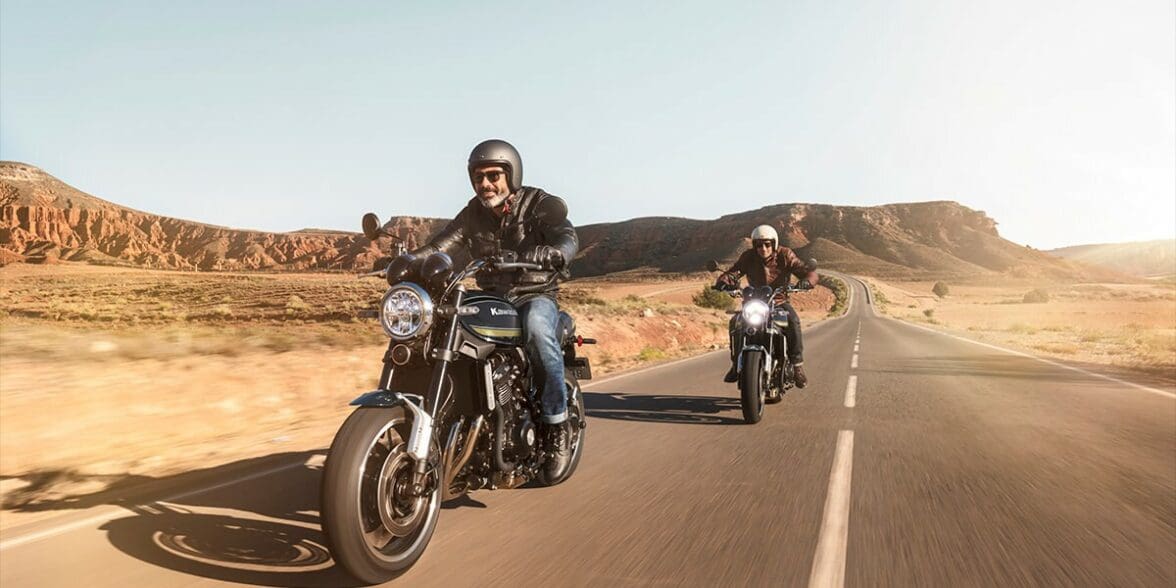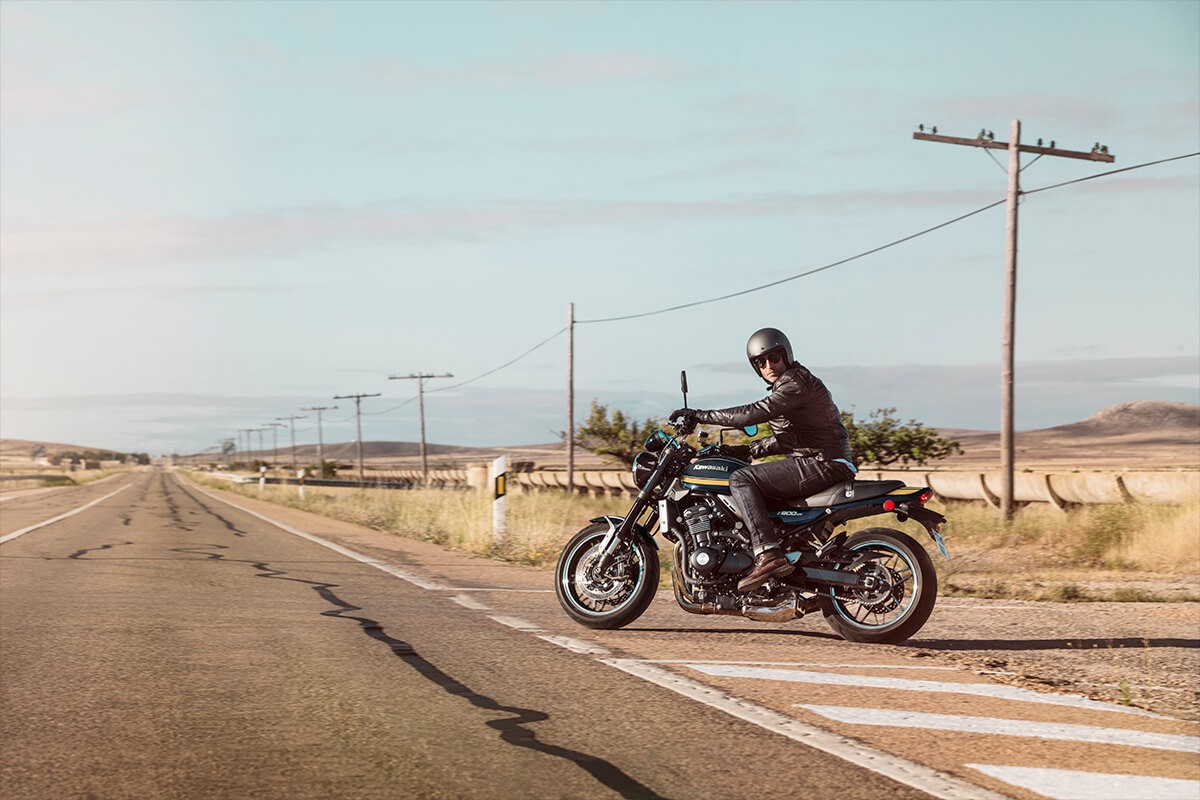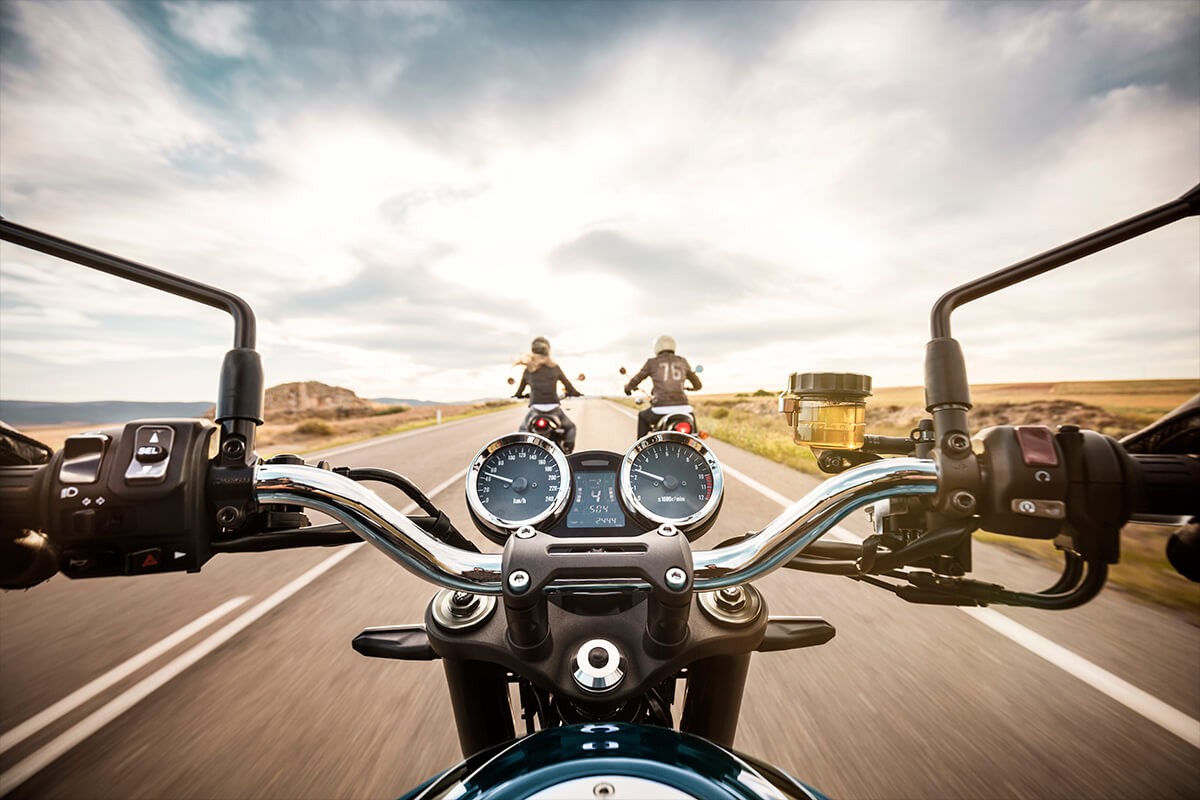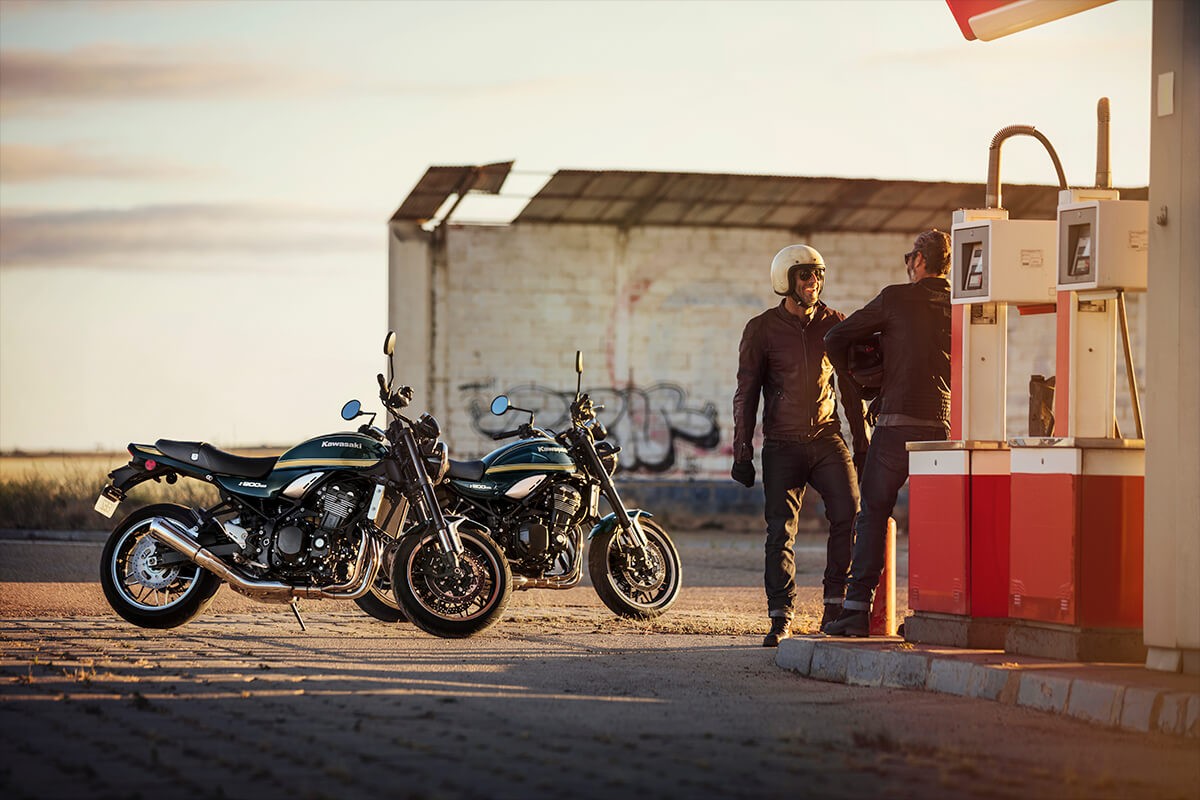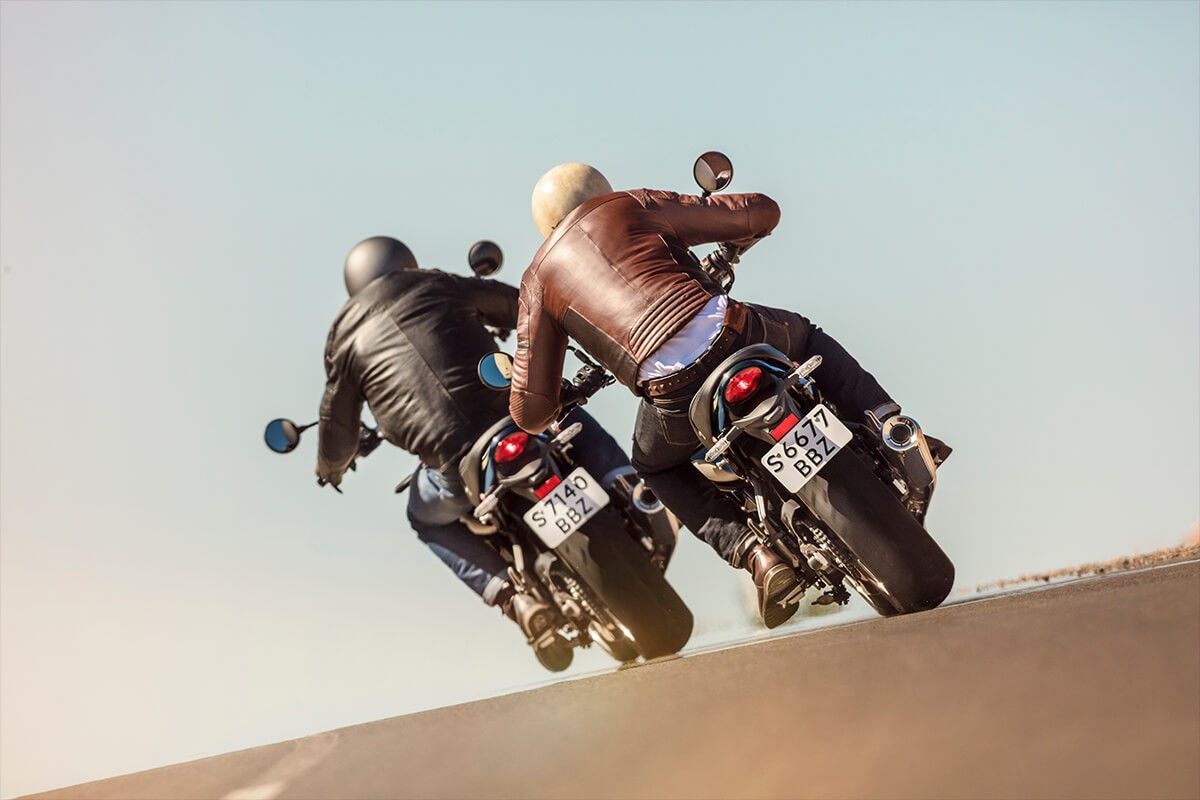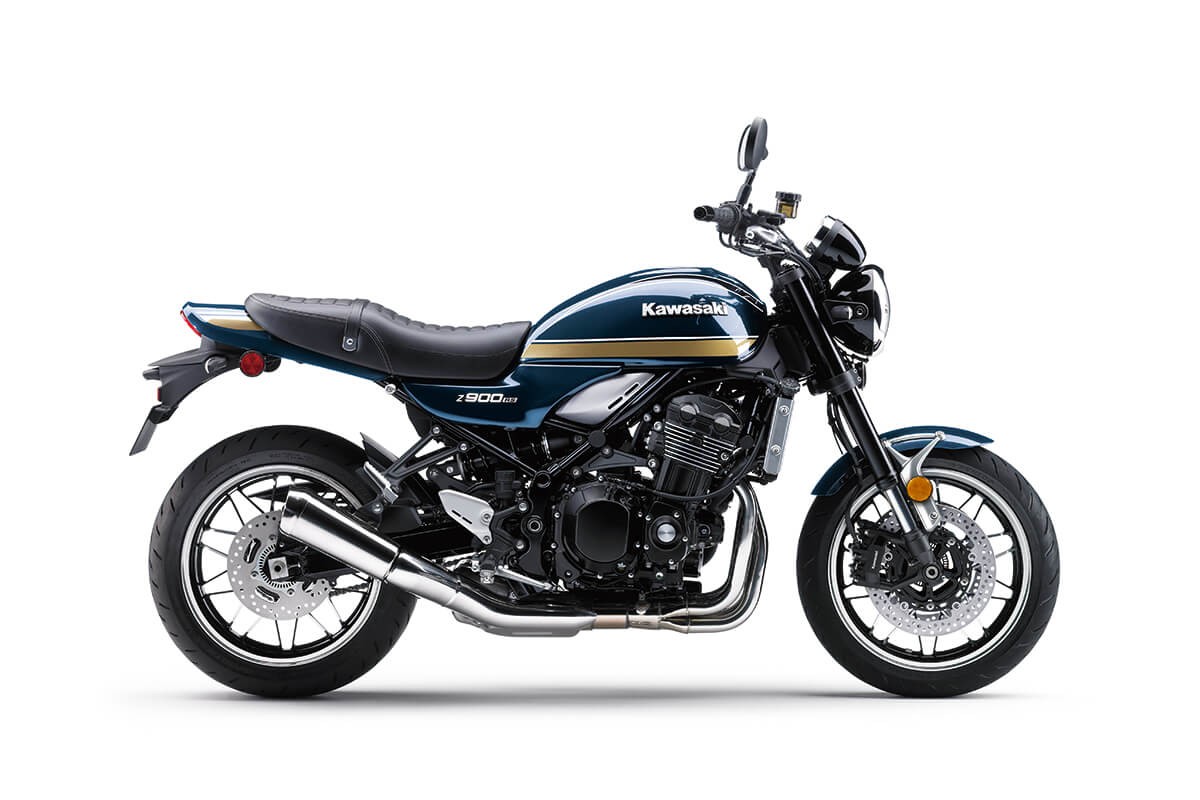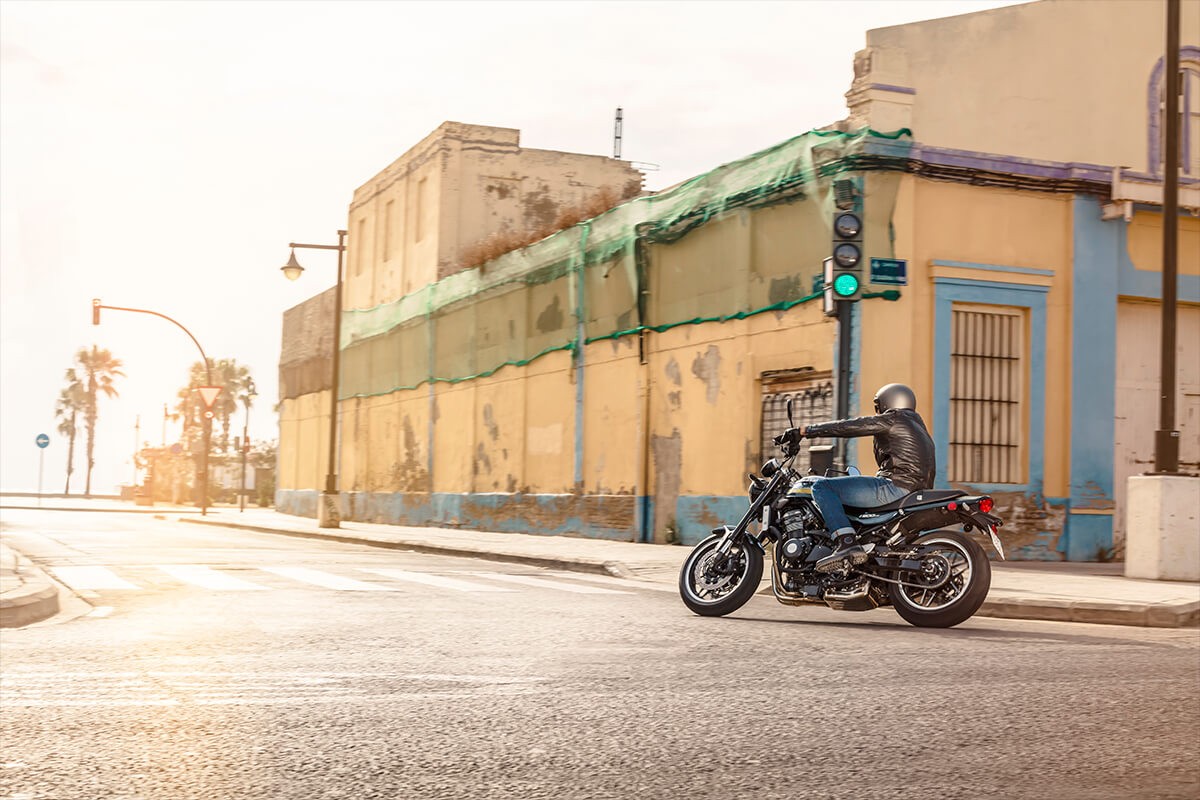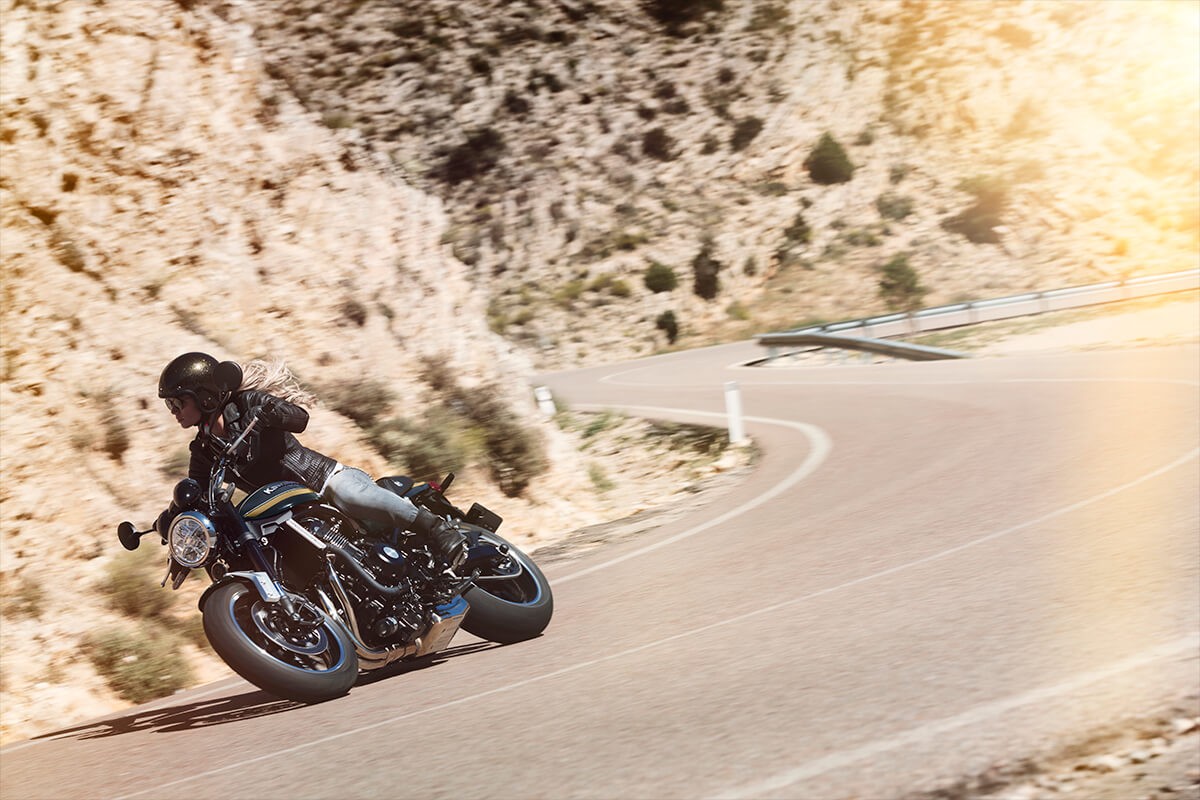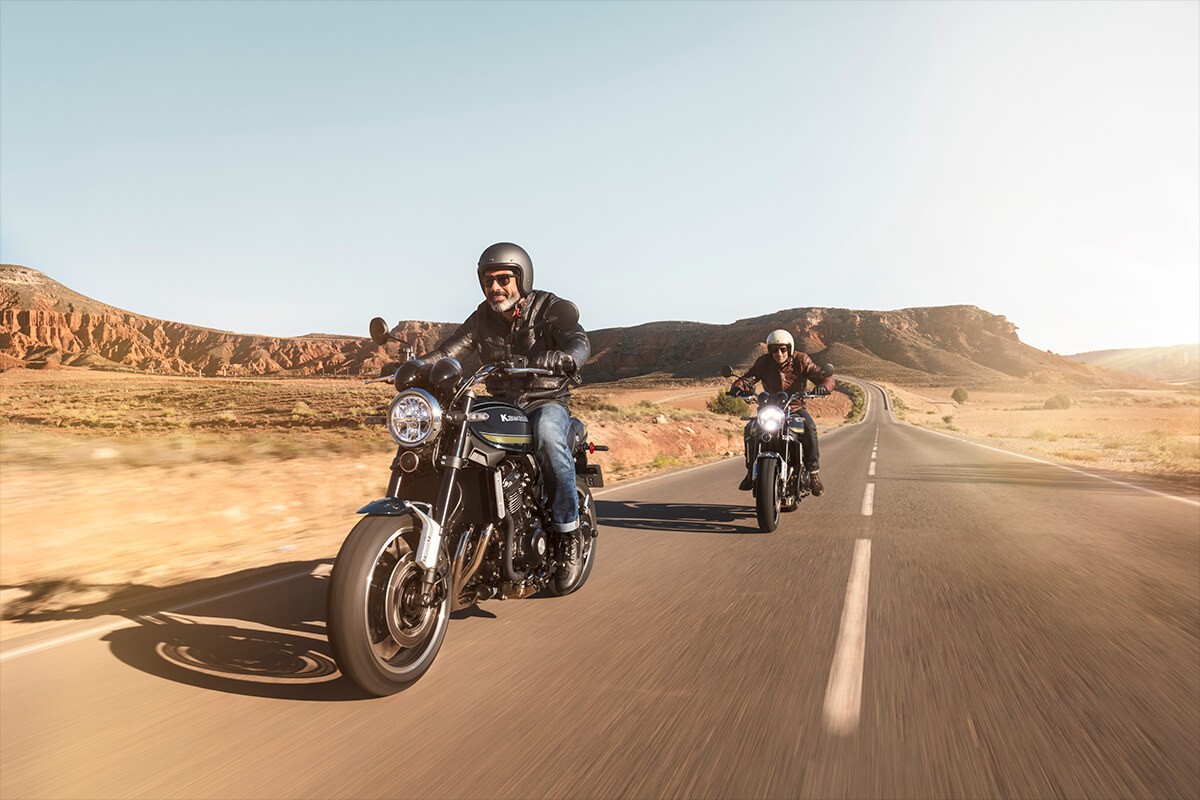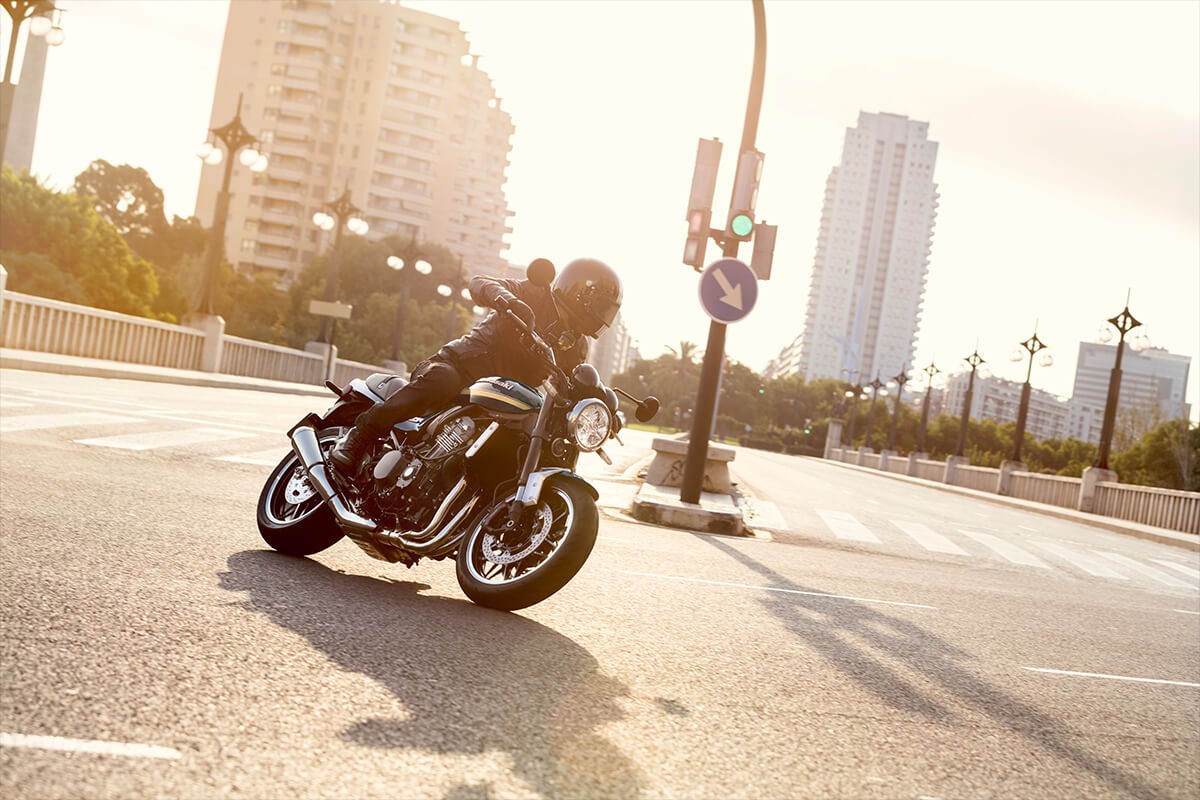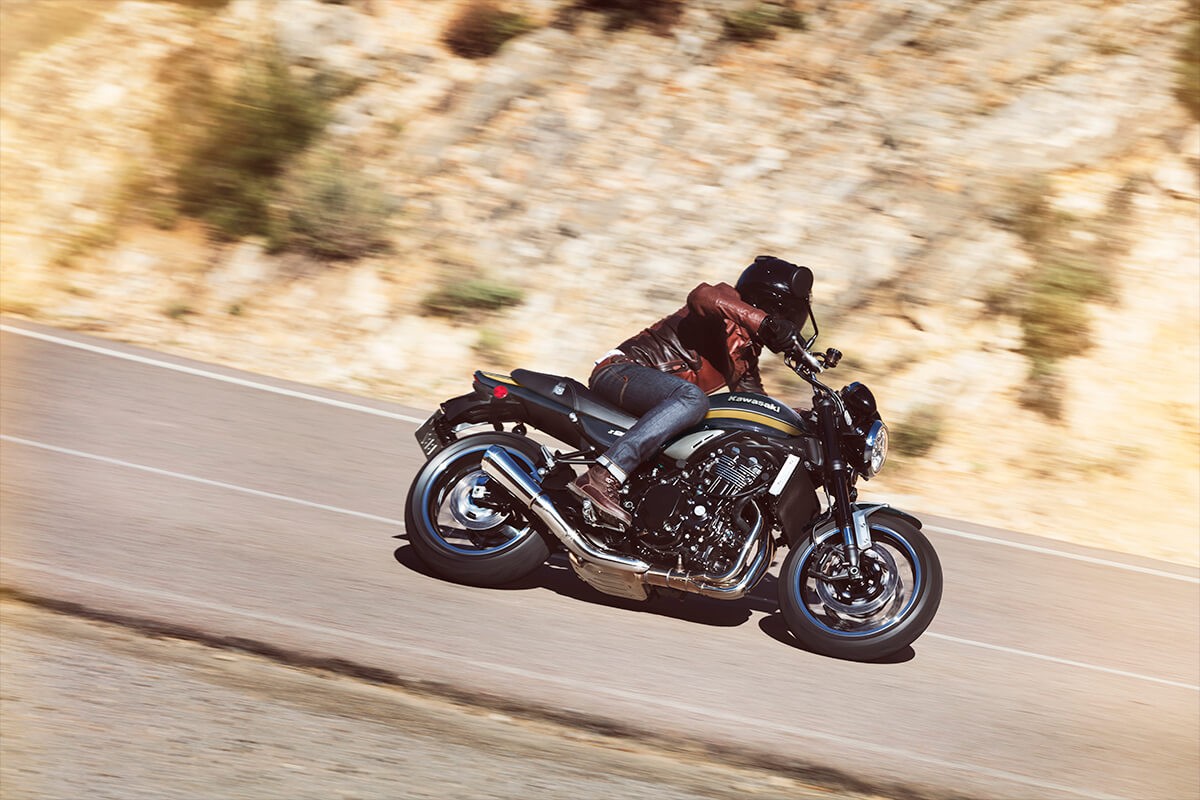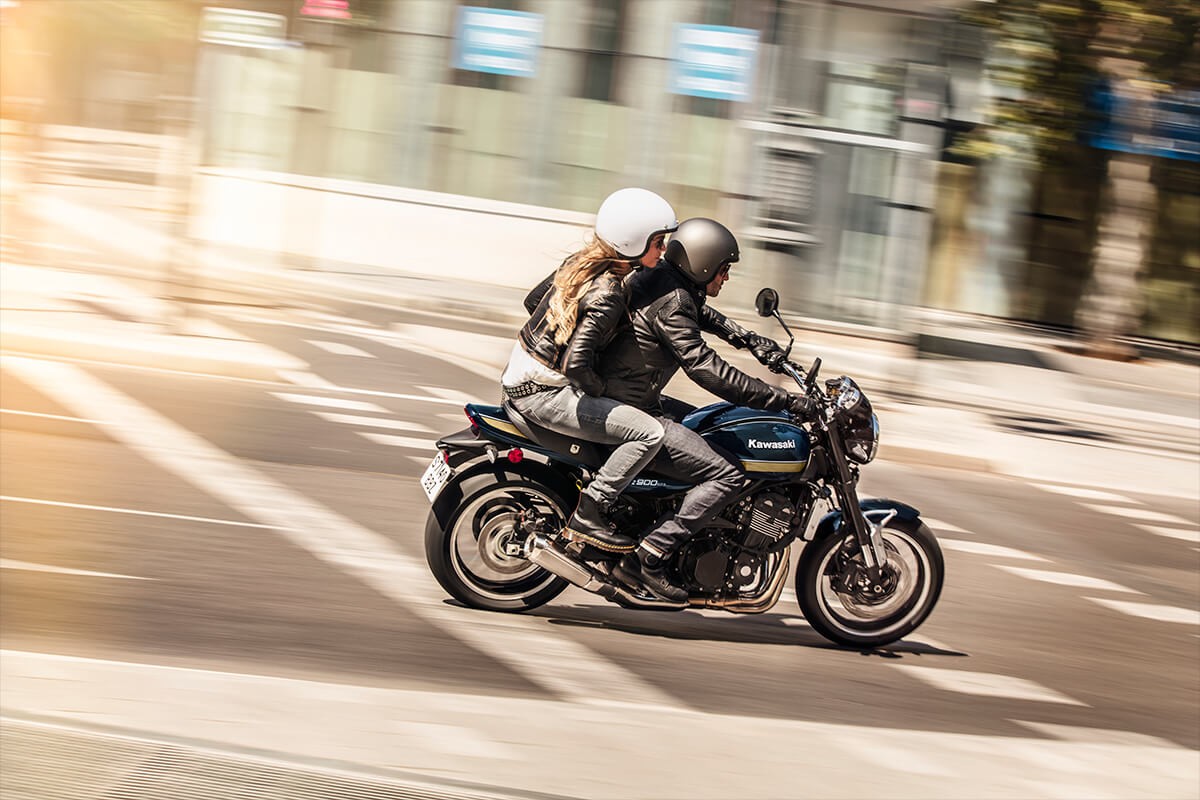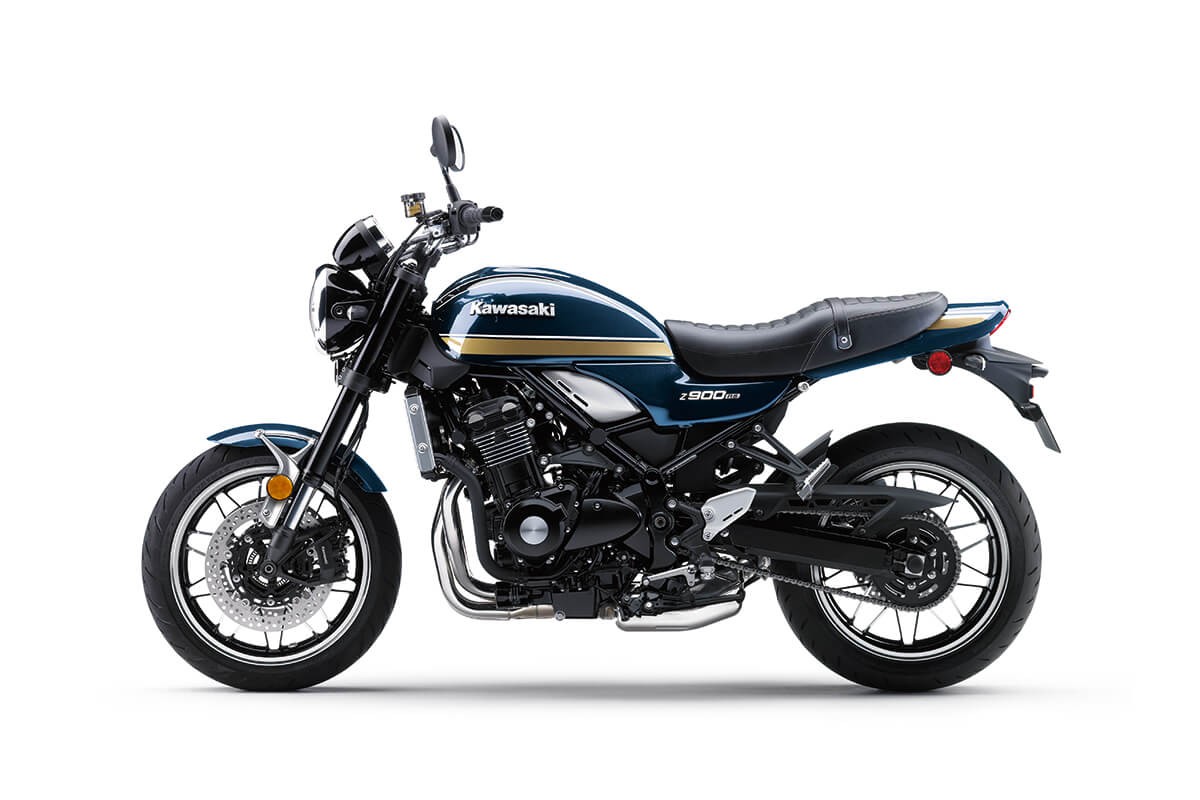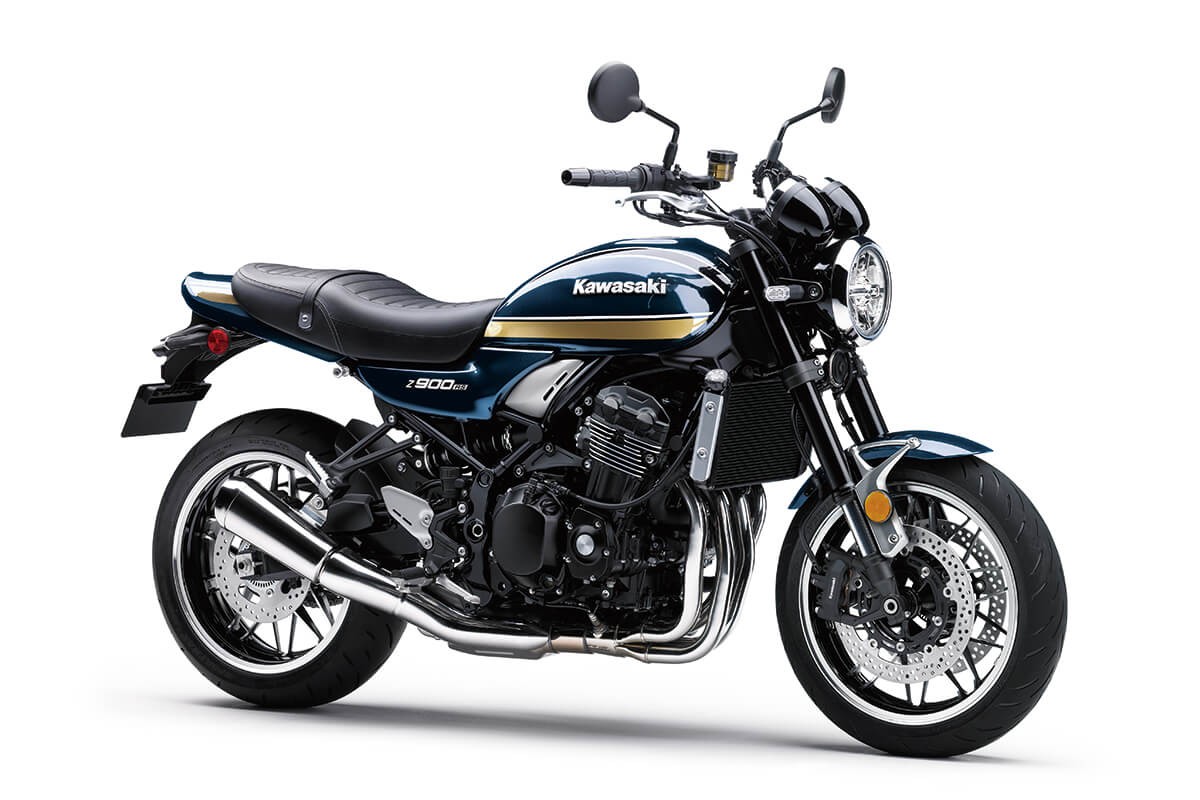The 2022 Kawasaki Z900RS: Welcome to the Retro Revolution
Contents
The only thing better than a retro Kawasaki bike is a brand new Kawasaki bike—and the 2022 Kawasaki Z900RS gives you the best of both worlds. This year’s model draws enough from the glory days of naked motorcycles to satisfy your nostalgia for the good ol’ days of classic cafe racing, but the features and engineering are all modern enough to make sure your ride stays comfortable and safe.
Naked motorcycles from Japan have been big business for a number of years now, and Kawasaki has kept themselves firmly at the front of the pack with offerings like this. The 948cc in-line four-cylinder engine in the Z900RS puts out 111 hp @ 8,500 rpm and 72.3 lb-ft of torque @ 6,500 rpm, giving riders tons of braap for their buck.
You won’t find many changes from last year’s model here, but the 2022 Z900RS does come in eye-catching Candy Tone Blue, which gives it a distinctive appearance. There’s also a 50th Anniversary Edition, which comes in an utterly gorgeous (and very retro) Candy Diamond Brown.
What’s not retro here is the list of features: Kawasaki Traction Control (KTC), dual throttle valves, an assist & slipper clutch, horizontal back-link rear suspension, and ABS all come standard on the new Z900RS. That means you get to enjoy the classic cafe racing experience with none of the danger faced by riders of yore. Score one more win for Team Green!
The Z900RS makes an adventurous and attractive addition to Kawasaki’s motorcycle models for 2022. Bikes like the Triumph Bonneville T120 and Ducati Scrambler Nightshift might want to make some room.
The 2022 Kawasaki Z900RS starts at $11,749 USD / $13,899 CAD.
On this page: we’ve curated specs, features, news, photos/videos, etc. so you can read up on the new 2022 Kawasaki Z900RS in one place.
Model Overview
General Info
- Price: $11,749 USD / $13,899 CAD
- Key Features:
- Kawasaki Traction Control (KTC)
- Sound tuning
- Ergo-fit chassis
- Horizontal back-link rear suspension
Main Specs
- Engine: 948cc, liquid-cooled, 4-stroke, DOHC 16-valve in-line four
- Power: 111 hp @ 8,500 rpm
- Torque: 72.3 lb-ft of torque @ 6,500 rpm
- Curb Weight: 472 lbs (214 kg)
- Seat Height: 31.5 in (800mm)
Competitors
2022 Kawasaki Z900RS Specifications
ENGINE |
||
| Engine | 948cc, 4-stroke, 4-cylinder, DOHC, 16-valve, liquid-cooled | |
| Power | 111 Hp | |
| Bore x Stroke | 73.4 x 56.0mm | |
| Compression Ratio |
10.8:1
|
|
| Fuel System | DFI® with Keihin 36mm throttle bodies | |
| Starter | Electric | |
| Lubrication | ||
DRIVETRAIN |
||
| Clutch | ||
| Transmission | 6-speed, Manual, Return Shift | |
| Final Drive | Sealed chain | |
CHASSIS |
||
| Suspension Front | Inverted telescopic fork with (13-way) adjustable compression and rebound (11-way) damping, spring preload (15-turn)/4.7 | |
| Suspension Rear | Horizontal back-link swingarm with stepless adjustable rebound damping and spring preload/5.5 in | |
| Brakes Front | Dual 300mm disc, ABS | |
| Brakes Rear |
Single 250mm disc, ABS
|
|
| Tires Front | 120/70 ZR17 | |
| Tires Rear | 180/55 ZR17 | |
| Fuel Tank Capacity | 4.5 gal | |
| Color |
Candy Tone Blue
|
|
ELECTRICAL |
||
| Ignition | TCBI with electronic advance | |
| Spark Plugs | ||
| Headlight | LED | |
| Tail Light | LED | |
DIMENSIONS |
||
| Overall Length | 83.1 in | |
| Overall Width | 34.1 in | |
| Overall Height | 46.5 in | |
| Wheelbase | 57.9 in | |
| Ground Clearance | 5.1 in | |
| Seat Height | 32.9 in | |
| Curb Weight | 474.1 lb (50-State Model)* | |
WARRANTY |
||
| Warranty | 12 Months | |
| Kawasaki Protection Plus | 12, 24, or 36 months | |
2022 Kawasaki Z900RS Features
Assist & Slipper Clutch
Under normal operation, the assist cam functions as a self-servo mechanism, pulling the clutch hub and operating plate together to compress the clutch plates. This allows the total clutch spring load to be reduced, resulting in a lighter clutch lever feel when operating the clutch.
When excessive engine braking occurs – as a result of quick downshifts (or an accidental downshift) – the slipper cam comes into play, forcing the clutch hub and operating plate apart. This relieves pressure on the clutch plates to reduce back-torque and helps prevent the rear tire from hopping and skidding. This race-style function is particularly useful when sport or track riding.
Dual Throttle Valves
On models with dual throttle valves, there are two throttle valves per cylinder: in addition to the main valves, which are physically linked to the throttle grip and controlled by the rider, a second set of valves, opened and closed by the ECU, precisely regulates intake airflow to ensure a natural, linear response. With the air passing through the throttle bodies becoming smoother, combustion efficiency is improved and power is increased.
Economical Riding Indicator
While effective vehicle speed and engine speed may vary by model, paying attention to conditions that cause the “ECO” mark to appear can help riders improve their fuel efficiency – a handy way to increase cruising range. Further, keeping fuel consumption low also helps minimize negative impact on the environment.
KTRC (Kawasaki Traction Control)
Less intrusive modes maintain optimum traction during cornering. Designed with sport riding in mind, they facilitate acceleration out of corners by maximizing forward drive from the rear wheel. And because Kawasaki’s sophisticated software bases its dynamic analysis on the chassis’ orientation relative to the track surface (rather than relative to a horizontal plane), it is able to take into account corner camber, gradient, etc., and adapt accordingly.
In the more intrusive modes (and for some models, in any mode), when excessive wheel spin is detected, engine output is reduced to allow grip to be regained, effectively enabling riders to negotiate both short, slippery patches (train tracks or manhole covers) and extended stretches of bad roads (wet pavement, cobblestone, gravel) with confidence.
Sound Tuning
Designed specifically to allow riders to enjoy their motorcycles aurally as well as physically, the carefully crafted auditory notes can be the key components of the street riding exhilaration offered by models that have benefitted from sound tuning. Sound tuning can include conducting sound research, designing intake and exhaust system components based on an acoustic test carried out in a sound room, and careful consideration of every detail of a system’s components to ensure a balance of performance and the desired sound.
ABS (Anti-lock Brake System)
ERGO-FIT
ERGO-FIT® is an interface system designed to allow riders to find their ideal riding position. Various points of the chassis interface (the handlebar, footpegs and seat, etc.) can be adjusted through a combination of interchangeable parts and parts with adjustable positions. This enables a wide range of riders to find a riding position that offers both comfort and control. Feeling at one with their machine, they will be able to experience how Kawasaki machines are fun and rewarding to ride.
*Adjustable parts and their range of adjustability vary by model.
Horizontal Back-link Rear Suspension
2022 Kawasaki Z900RS Photos
2022 Kawasaki Z900RS Videos
2022 Kawasaki Z900RS Review & Walkaround
2022 Kawasaki Z900RS Review and Test Ride 4K
Links
Kawasaki Official Websites


